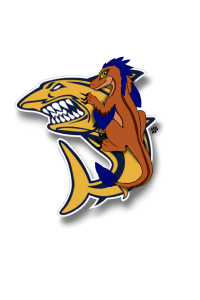
By Jack O’Dwyer
Staff Writer
We’re kicking off the Dinosaur of the Month series with a huge favorite of mine: say a metaphorical hello to the Velociraptor.
Velociraptor mongoliensis, or V. mongoliensis, was a theropod dinosaur that lived nearly 70 million years ago during the latter part of the Cretaceous Period along with the ever-popular Tyrannosaurus rex and triceratops.
The first velociraptor fossil was found in the Gobi Desert in early August of 1923 by Peter Kaisen. It consisted of nothing more than a crushed skull and a toe claw. Nevertheless, Kaisen was quick to name his new find “velociraptor” from the Latin words “velox,” meaning “swift,” and “raptor” meaning “robber.”
Unfortunately, as wicked cool as “velociraptor” sounds, it actually isn’t cool enough to match the dinosaurs in the hit movie series “Jurassic Park.” That’s right, those human-sized, super intelligent, iconic raptors depicted in the movies aren’t true velociraptors.
Proper velociraptors were only 1.6 feet tall—smaller than the average turkey—and weighed only 33 pounds. They were nearly 6 feet in length from nose to tail tip with the snout measuring in at 10 inches all by itself.
We now have evidence to suggest that this dinosaur was feathered as well as scaled. Quill knobs—small bumps on modern birds where the feathers attach to the body—were found on the velociraptor’s forearm bones.
It definitely had feathers on its arms, which scientists have theorized helped it stay on top of its prey after it pounced.
While the idea of being a pack hunter is certainly dramatic, that’s all it is: an idea. There has been no concrete evidence to suggest that the velociraptor ever cooperatively hunted with other members of its kind. In fact, most of the velociraptor fossils found were of single, isolated individuals. We can’t say much for intelligence as we’ve never been able to test it.
Of course, none of this means that the velociraptor wasn’t a formidable predator in its own right. In 2011, a new theory was put forth called “raptor prey restraint.” The theory suggested that in order to take down its prey, this raptor literally hurdled itself onto its target—an animal that was most likely much larger than it—and tried to tip it over using nothing but its body weight and toe claws.
The velociraptor didn’t even bother to wait until the animal was dead to start eating it, so eventually the creature would die either of blood loss or organ failure. Certain modern birds of prey mimic this technique, which makes sense with the velociraptor’s anatomical structure.
The theory also surmised that the velociraptor’s bite capabilities were actually a lot like that of the Komodo dragon, meaning that while it had a relatively low bite force, it used its teeth in more of a sawing motion to inflict damage.
Despite shattering the initial dramatizations of this dinosaur, I daresay that it’s still a pretty awesome raptor. Where else are you going to find all this power packed into a creature that only measures up to the average person’s knee?
If you’re looking for terror in an otherwise small and feathered package, look no further than the velociraptor.
















